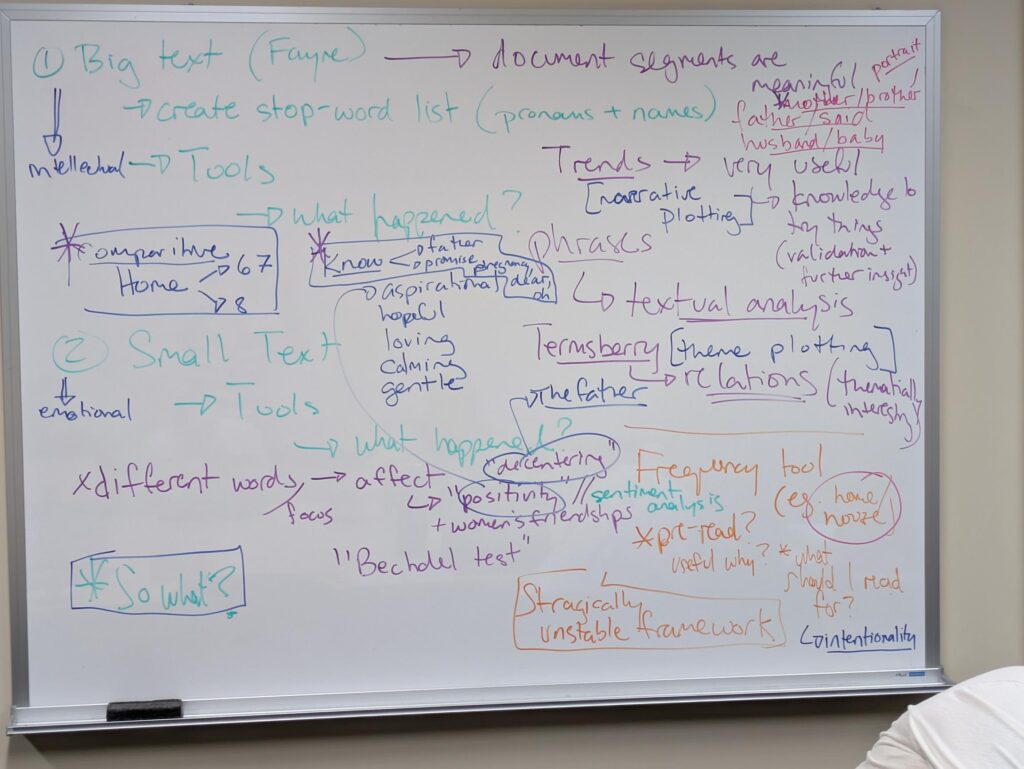Riley’s thoughts:
The discipline of English Language and Literature teaches students how to process language directly from the page, interpreting and concluding in their own minds. Rarely do we turn to technology to assist us with this.
In our recent MAMM case study, however, we chose to change that, exploring the outputs of a digital language-processing tool called Voyant. Although Voyant is an older tool, we were curious to investigate and compare Voyant’s data about the full text of Ann-Marie MacDonald’s Fayne, which we dubbed the “big text”, and our mined quotations regarding spaces of female friendships, the “small text”. Our team selected specific Voyant tools to focus on, gravitating towards features like TermsBerry and Trends that visually demonstrated the prevalence of words, and by association, themes.
It was intriguing to witness the data that Voyant produced individually and examine what that reflected about Fayne, but it was more fascinating to compare the data outputs of “big text” and “small text”. The initial language-processing Voyant did of Fayne allowed for comparative study between said data and our quotations regarding spaces of female friendships, something highly relevant to our Phase 2 research and explorations of intimacy.
There was a moment, instantly after feeding the “small text” through Voyant. A moment where such different words were visible onscreen, where we all eagerly scanned the data and pointed out specifics to each other. This was a moment of recognition that we were able to transform a language-processing tool into something more than statistical output. Voyant was now a visually comparative representation of the spaces, atmospheres, and importance of female friendships.

Of all our collaborative work, this was a very enriching experience. Our team worked together to navigate an initially foreign tool, filling whiteboards with ideas and discoveries. We each found different angles from which to view the data, yet shared the emotional responses each new discovery triggered.
This emotion made our usage of Voyant so starkly unique. The tool itself highlights intriguing aspects of the novel, but the incorporation of our intimate human-level processing brought emotion into the machine-level data output. It was heartwarming to investigate the data’s significance, associating “home” and decentring of males with female friendships; it was nauseating and unsettling to investigate other aspects.
While Voyant understands word quantity and the novel’s language patterns, we understand the significance of that data in Ann-Marie MacDonald’s work. Our combination of human-level and machine-level processing resulted in a case study of new discoveries and emotional depth, a finding shared academically by our project lead, Dr. Neta Gordon.
